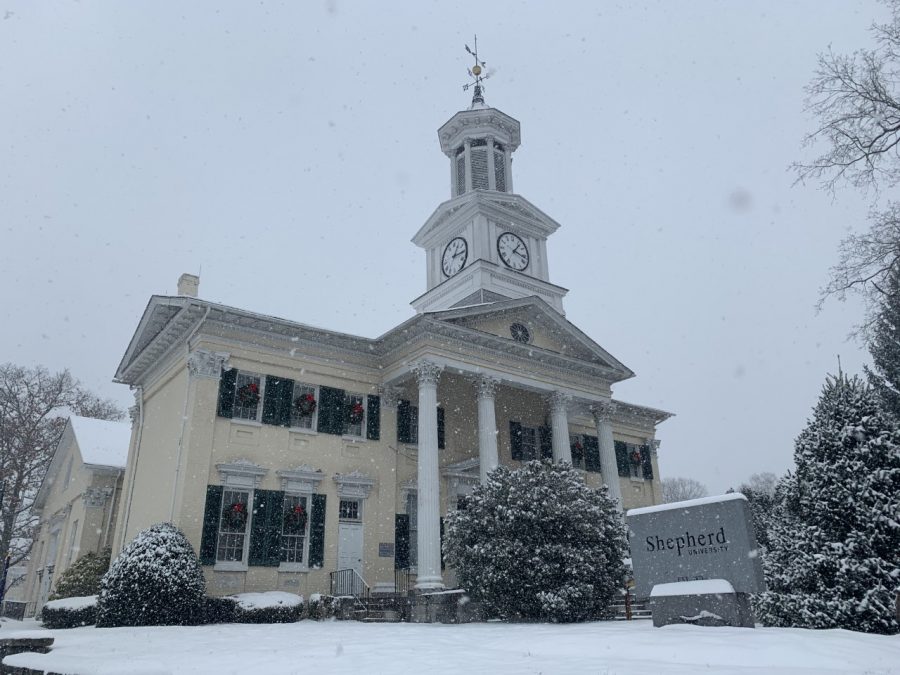SHEPHERDSTOWN, W.Va., – Shepherd University recently had a closure due to inclement weather, also known as a snow day. But with the majority of students taking courses remotely from home or their dorm rooms, it left them questioning if they still needed to click the Zoom link on Sakai and attend class.
Even though about half of the classes are remote, Dr. Scott Beard, provost and vice president for academic affairs at Shepherd, said there will be no changes to the inclement weather policy for the remainder of the semester. If the university is closed, classes are canceled.
“If we’ve learned one thing during the pandemic, it is the importance of not only flexibility, but also empathy for each person’s unique situation and mode for learning. While we are all experiencing fatigue from the ongoing issues associated with the pandemic, more remote learning has had some positive outcomes.”
At this moment there is no push to change the snow day policy as the internet is needed to conduct class from home and it is not always reliable especially during bad weather.
“The question is one of timing and of access to wireless/internet. Some students come to campus to connect for a faster and more reliable connection. In my messaging to faculty, that is why asynchronous options provide the most equitable option for all students,” said Dr. Beard about the cancellation of classes due to inclement weather.
Dr. Beard noted that, when people connect at home, “there can be issues with timing (i.e., if many in your household are using the internet) and those who live in remote locations with unreliable connectivity.”
Out of approximately 1,000 course sections for spring 2021, about 23% of our courses are face-to-face, with another 32% being hybrid, meaning there is some in-person component to the class noted Dr. Beard.
Dr. Beard also said, “we’ve also made the distinction for the remote portion of the class to be synchronous (prescribed day and time) vs. asynchronous, meaning that students do not “attend” class at a set time, but rather, access pre-recorded lectures and digital curriculum materials and respond through email, discussion boards, and collaborative documents at a time of their own choosing.”
“Typically, students must access material within a set window, such as one week from the posting of course materials, but students control when they access these documents,” said Dr. Beard.
While work during the pandemic has not been the easiest, Dr. Beard said some good has come from it.
“Faculty have received training in best practices for online pedagogy, we’ve further defined our course modalities on RAIL (online, hybrid, hy-flex and face-to-face with synchronous or asynchronous options), and by fully utilizing our learning management system Sakai, there can be fewer disruptions to the learning process.”
“That being said, we’re all under a lot of stress and I think the most important thing is to communicate expectations, be flexible, and keep the focus on not only the academic progress of our students, but also their overall well-being,” said Dr. Beard.
To stay up to date on cancellations, delays and more make sure to sign up for RAVE alerts.
